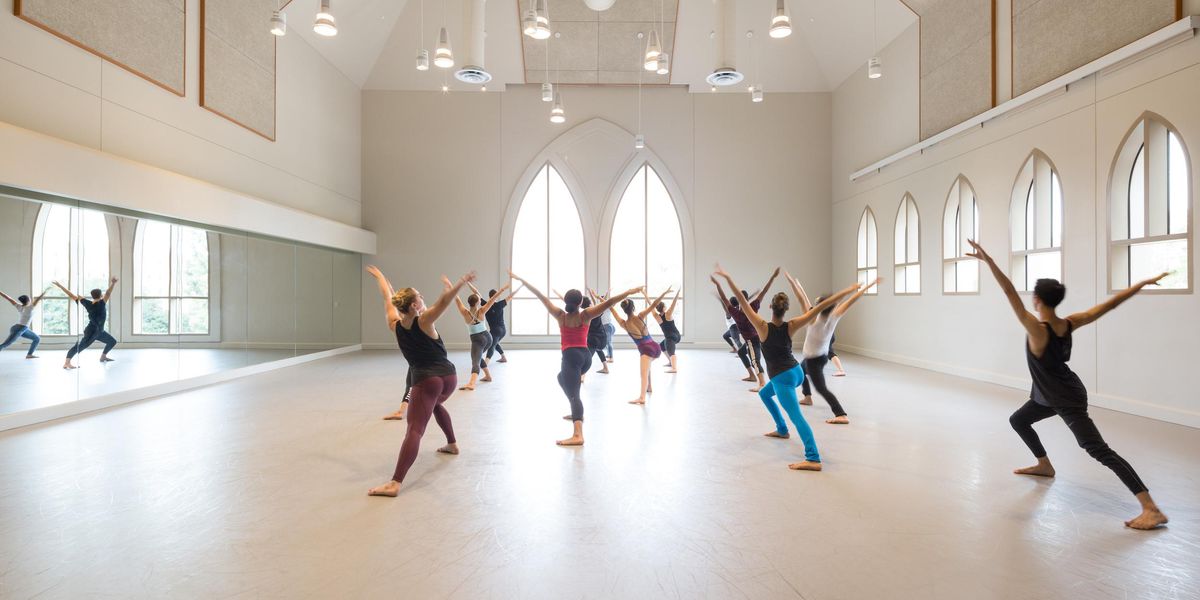Quick Q&A: Christopher Hampson
Scottish Ballet’s director on his impassioned vision for the company
After an international career as a choreographer, Christopher Hampson has been welcomed back by the UK dance world as artistic director of Scottish Ballet. The Manchester-born former English National Ballet dancer, a 2003 “25 to Watch,” has set his fluent, neoclassical pieces on companies ranging from the Royal New Zealand Ballet to Atlanta Ballet. He took over from Ashley Page at Scottish Ballet in 2012, and this month, the 36-strong company showcases its new director’s ambitious vision at the Edinburgh International Festival. From Aug. 16 to 19, the program of nonstop dance includes 20 works by 14 choreographers, including Kylián, Tharp, Édouard Lock, and Hampson (his own
Rite of Spring). Writer Laura Cappelle spoke with Hampson in May, as Scottish Ballet prepared for the challenge.
You spent most of your career as a freelance choreographer.
Yes, I was freelance for 14 years, and I loved it. I’ve always been a touring dancer, and I think it prepared me for the next stage in my career. I’ve seen situations flare up from nowhere. I learnt what to do and not to do.
How do you approach directing?
I’m very hands-on, and I really enjoy this job, even the difficult parts. I like the strategy, the small planning, working with the dancers, and I love commissioning.
How would you define Scottish Ballet’s identity?
Every company in the British Isles has a place in the cultural landscape, and our remit is to always do something innovative. We don’t have to look too far back: Our heritage only goes back 45 years or so. I do want to show more of founder Peter Darrell’s work, but Scottish Ballet will always look to engage with artists of today, even in presenting the classics. We are the first ballet company to do a full-length ballet by Matthew Bourne, Highland Fling, his reworking of La Sylphide.
Where do you want to take the company’s repertoire?
My first priority is to expand it exponentially, to increase the number of choreographers presented. Scottish Ballet also has a focus on strong narrative ballet, and I want to further it. Annabelle Lopez Ochoa’s A Streetcar Named Desire won a South Bank Award this year, and I’ll contribute next season with a new Hansel and Gretel.
Hampson and members of Scottish Ballet in rehearsal. Photo here and of Hampson at top by Andy Ross, Courtesy SB.
Scottish Ballet hasn’t always been in the spotlight at the Edinburgh International Festival, but this year is different: You’re presenting 20 works by 14 choreographers over four days. How did the project, Dance Odysseys, come about?
I feel like I’m showing my colors in Edinburgh. It was my goal to present as many different voices as possible, and the director of the festival was keen to show more chamber dance works, which aren’t always easy to program in triple bills. In Edinburgh we will start at midday and finish at 9 pm every day at the Festival Theatre. People can come and watch for an hour or spend the whole day. There will be dance in alternative spaces, films, discussions. It is all-consuming, a real jigsaw puzzle to plan, but the dancers are really enjoying the challenge.
You’re presenting five works by women choreographers in Edinburgh. Do you feel they’re not represented enough?
Yes. There is an imbalance between female and male choreographers, and I don’t know why, but I speak about the issue a lot. I read in the press that perhaps ballet doesn’t lend itself to producing strong female leaders, but I’m not sure I stand by that. British ballet was made by many women, including Monica Mason at The Royal Ballet. It’s not even risky to commission a woman choreographer; I programmed all five in Edinburgh not because they’re female, but because they’re good. The gender discussion can sometimes be a wall-building exercise, and it doesn’t help. We need to keep moving forward.
Who should the audience look out for in Edinburgh?
I’m very excited to bring someone like Helen Pickett to the UK. She has that wonderful heritage from working with Forsythe, and her work is very honest. Royal Ballet soloist Kristen McNally is also coming to do something very specific, a bit unusual. I’ve had my eye on her for a long time. She’s never predictable, and her progression has been consistent. The Royal Ballet has yet to commission her, but maybe they can’t offer her the platform she needs right now—she is out of the box.




